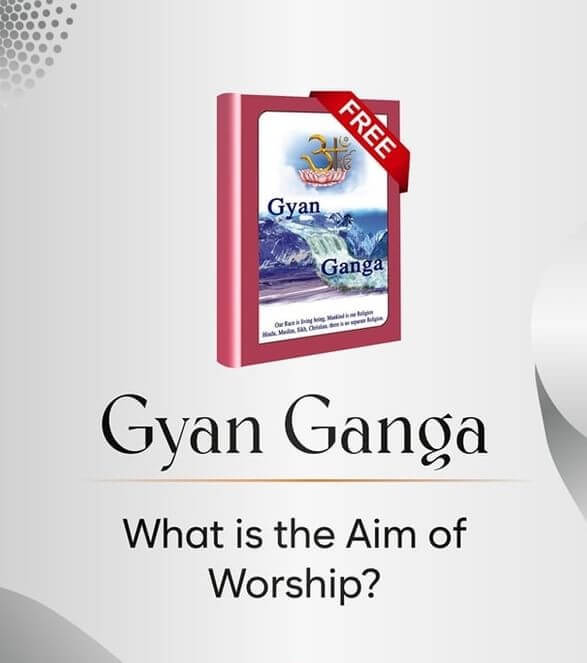What are the Three Gunas? - With Evidence
The Revelation of True Knowledge / What are the Three Gunas? - With Evidence
What are the Three Gunas? - With Evidence
The three gunas (qualities) are embodied in the deities Rajgun-Brahma Ji, Satgun-Vishnu Ji, and Tamgun-Shiv Ji. These three gods, who are responsible for creation, preservation, and destruction, have taken birth from Brahm (Kaal) and Prakriti (Durga), and they are all perishable.
Evidence 1: Shri Shiv Mahapuran
In the Rudra Sanhita, Chapter 9, page 110 (published by Gitapress, Gorakhpur, edited by Hanuman Prasad Poddar), it is stated: "In this way, Brahma, Vishnu, and Shiv, the three gods, possess gunas (qualities), but Shiv (Brahm-Kaal) is said to be beyond these gunas."
Evidence 2: Shrimad Devibhagwat Puran
The Shrimad Devibhagwat Puran (Gitapress, Gorakhpur, edited by Hanuman Prasad Poddar and Chiman Lal Goswami), Skand 3, Chapter 5, page 123, further elaborates on the roles of the three gunas:
"Vishnu prayed to Durga: 'I (Vishnu), Brahma, and Shankar exist only by your grace. We are born (aavirbhaav) and die (tirobhhaav). We are not eternal, but you alone are eternal, the mother of the world (jagat janani), Prakriti, and Goddess Sanatani.'
God Shankar said: 'If Brahma and Vishnu have taken birth from you, then I, Shankar, who was born after them and perform the duties of Tamogun, am also your son. Your qualities (gunas) are present everywhere in this world’s creation, preservation, and destruction. We, Brahma, Vishnu, and Shankar, are born of these three gunas and remain engaged in our respective duties as per your regulations.'"
This translation conceals some facts, so the Sanskrit text of the Shrimad Devibhagwat Mahapuran (Khemraj Shri Krishna Das Prakashan, Mumbai) provides more clarity.
Skand 3, Chapter 4, Verse 42 (Sanskrit):
Brahma Aham maheshwarH fil te prabhawatsarve vyaM jani yuta na yada tu nityaH, Ke anye suraH shatmakh pramukhaH ch nitya nitya twamev janani PrakritiH Purana (42)
"Brahma, I, and Mahesh (Shiv) exist by your influence, but we are not eternal. How can other gods like Indra be eternal? You alone are immortal, the mother who gave birth to us; you are Prakriti and Sanatani Devi."
Skand 3, Chapter 5, Verse 8 (Sanskrit):
Yadi dayardramna na sadambike kathamhaM vihitH ch tamogunH kamaljshch rajogunsambhavH suvihitH kimu satvguno hariH (8)
God Shankar questioned, "Oh Mother! If you are compassionate towards us, why did you assign me Tamogun, Brahma—who emerged from the lotus—Rajgun, and Vishnu, Satgun? In other words, why did you involve us in the painful cycle of birth and death for living beings?"
Skand 3, Chapter 5, Verse 12 (Sanskrit):
Ramayse swapatiM purushM sada tav gatiM na hi vih vid am shive (12)
"You are always in union with your husband, Kaal (God of Time). No one truly knows your state."
Skand 3, Chapter 5, Verse 43 (Sanskrit):
Ekameva dwitiyM yat Brahm veda vadanti vae Sa kiM tvam vaaapyasau va kiM sandehM vinivartay (43)
"The one referred to as Purna Brahm in the Vedas, is that you, or someone else? Dispel my doubt."
On Brahma Ji's request Devi replied:
Devyuvaach sadaektvaM na bhedosti sarvdaev mamaasya ch|| yosau saahamahM yosau bhedosti mativibhrmaat ||2|| AavyorantarM sookshmM yo ved matimaanhi saH || vimuktH sa tu sansaaranmuchyate naatra sanshayH ||3||
"What he is, I am; and what I am, he is. Only the wise who can understand the subtle difference between us will be liberated from the world. There is no doubt about this."
SumarnaaddarshanM tubhyaM daasyehM vishme sthite || SwartvyahaM sadaa devaH parmatma sanatanH ||80|| UbhyoH sumarnaadev karyasiddhir sanshaym′||Brahmovaach || Ityuktva vissarjasmaand tva shaktiH susanskrtaan′||81|| Vishnveth mahalakshmi mahakaaliM shivaay ch || mahasarasvatiM mahayM sthaanaattsmadwisarjitaH ||82||
Translation: "In times of crisis, I will appear before you when you remember me. Gods! Always remember me as the power of Parmatma Sanatan Dev. By remembering both of us, your tasks will surely be accomplished." Brahma Ji said, "With this, she empowered us and bade farewell—MahaLakshmi to Vishnu, MahaKaali to Shiv, and MahaSarasvati to me."
Mm chaev shareerM vae sootramityabhidheeyate sthoolM shareerM vakshyami brahmanH parmatmanH ||83||
Translation: Durga said, "My body is described as a beautiful cloth, while God Brahm is referred to as having a physical, material body."
Essence of the Above-Mentioned Statements from the Puranas:
It is clearly explained that Shri Brahma represents Rajgun, Shri Vishnu represents Satgun, and Shri Shiv represents Tamgun. These three gods are perishable and experience birth and death. Durga is also known as Prakriti, and her husband is Brahm (Kshar Purush/Kaal). Durga procreates with Brahm, and both have material forms (physical bodies).
This evidence is supported in Gita Chapter 14, Verse 3 to 5, where Brahm (Kshar Purush/Kaal), the giver of the knowledge of Gita, states that Prakriti (Durga) is his wife. He places the seed in her womb, and through this union, all living beings are born. Brahm identifies himself as the father of all beings within the 21 universes, while Prakriti (Durga/Ashtangi) is the mother. The three gunas (Rajgun-Brahma, Satgun-Vishnu, and Tamgun-Shiv), born from Durga, bind all living beings in the cycle of actions (karma).
← Essence of Shrimad Bhagavad Gita Trigun Maya hinders a soul's liberation →
